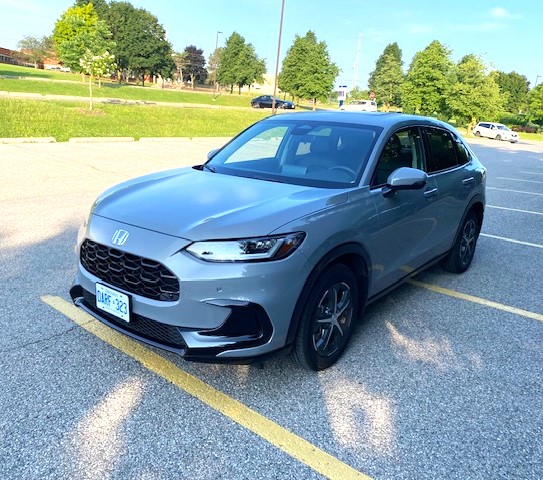
Other than an awkward grille, the HR-V is pleasingly styled, with a bit of a nod to Porsche
History
The first-generation Honda Fit-based HR-V, debuted for the 2016 model year. The second-generation HR-V, based on the Honda Civic platform, went on sale as a 2023 model. There are no changes of note for 2024.
Model Mix
The HR-V is offered in three trims, LX-B, Sport-B and EX-L Navi. All-wheel drive is standard on the Sport-B and EX-L Navi models and optional on the LX-B. The normally-aspirated 2L four from the Civic is the sole engine available in the HR-V. Power reaches the wheels via a continuously variable transmission (CVT).
| Vehicle tested | 2024 Honda HR-V EX-L Navi |
| Body style | Four-door crossover |
| MSRP as tested | $37,910 EX-L Navi |
| MSRP spread | $29,960 – $37,910 |
| Engine | 2L-4 (158 HP) |
| Transmission | CVT |
| Drive system | All-wheel drive |
| Observed fuel economy | 11.8L/100 km |
Styling
The grille looks a bit unfortunate, but the rest of the HR-V, with smooth curves and little unnecessary adornment, is quite chic. The HR-V does not really reflect Honda’s current styling vocabulary; with a different grille, it could conceivably pass for a small crossover from Porsche. Black trim accents on the lower body and over the wheel wells are quite attractive.
Interior
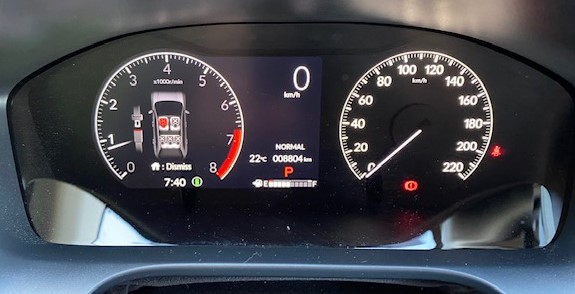
Crisply-marked instrumentation
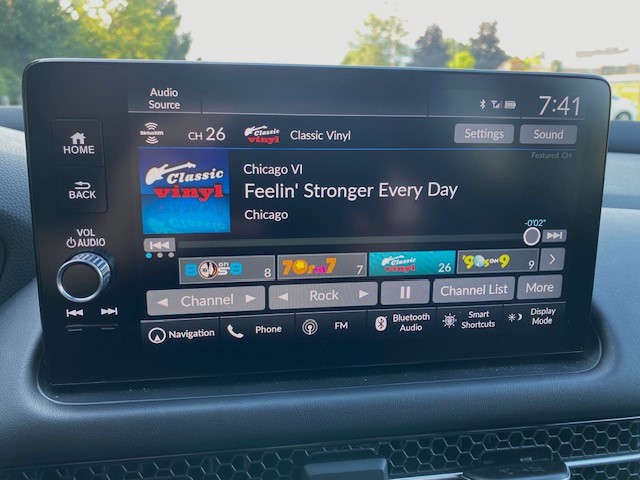
Infotainment screen lacks a tuning knob but is otherwise quite useful
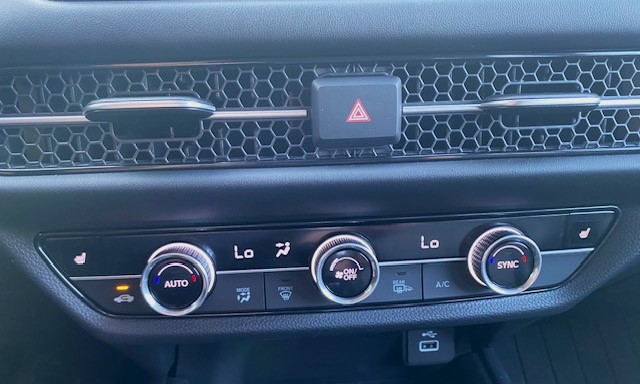
Vents hide behind a stylish honeycomb-pattern grille. Straightforward climate controls. The rotating knobs move with satisfying precision
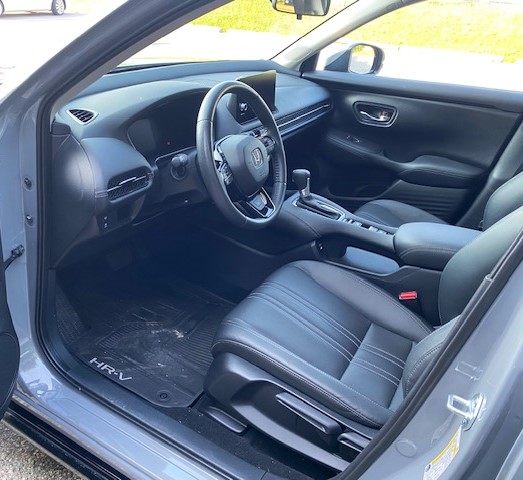
Comfortable front seats and lots of room in front. Slim console permits good space for occupants
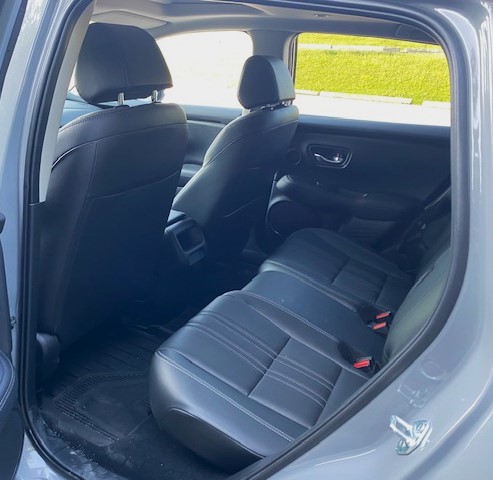
The supportive rear seat combines with very good legroom to make rear passengers very comfortable
The driver faces crisply marked displays. The top centre of the dash is the anchor point for a free-standing digital infotainment screen with attractive graphics. Physical buttons for home, back, and channel selection are incorporated into the left side of the screen. The lower parts of the screen show touch tabs for channel presets and for various other audio functions, as well as selection tabs for navigation, phone and other functions. Climate adjustments are manipulated by a series of push buttons as well as three knobs, two for the dual-zone climate system and one for fan speed. On the EX-L Navi tested, the front of the console contains a wireless cellphone charger, a conventional gear selector and a flying bridge section that houses several minor controls, including the electrically-triggered handbrake. Except for the light-coloured headliner, all the cabin trim is black, which comes off as a bit austere but the quality of materials is good. The lower door trims and the sides of the cargo area feature an embossed rib pattern which adds visual interest to usually featureless expanses. The front doors have small storage pockets and bottle holders, with the rear doors having only the bottle holders. The front seats are comfortable, but the driver’s seat lacks power adjustment, which is odd for the premium trim tested. The driving position is good, as is visibility. The rear seat is supportive and legroom is very good for a vehicle of this size. Headroom is substantial, lending an air of spaciousness. Cargo space is regularly-shaped, deep below the window line and the rear seats lay almost flat when folded.
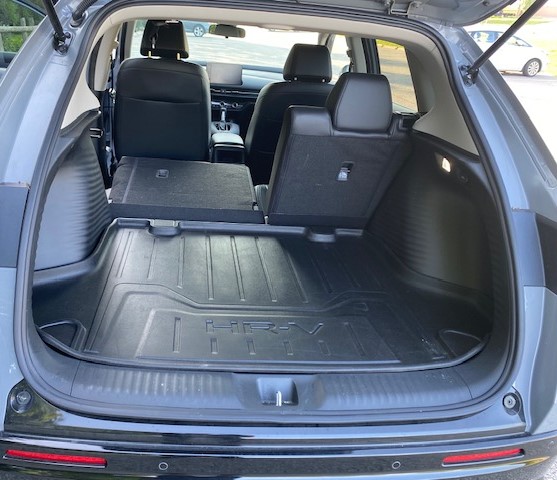
The cargo area is deep below the window line. Note the interesting ribbed pattern on the wheelhouses, which are usually plain.
Performance
The 2L engine, normally-aspirated four delivers sufficient urge but drones and throbs intrusively when anything more than gentle acceleration is required. The car is quiet enough at a steady speed on the highway.
Unlike some makers that program their CVTs to mimic the shifts of a conventional transmission, Honda has not, leading to a rubber-band-like soundtrack during all but gentle acceleration.
The HR-V’s steering is nicely weighted and quick but not nervous at highway speeds. Handling is steady and the HR-V’s ride is resilient, but on the firm side.
Braking is strong, with good pedal feel and no lost motion.
Road noise is reasonably well suppressed. While wind noise is nicely controlled, noise from passing cars is prominent, perhaps due to thin window glass or a lack of sound-proofing inside the doors.
The air-conditioning coped well with Toronto’s torrid summer weather and the seat heaters and steering wheel heat work very well.
The hood is very heavy to lift, which could make routine tasks like refilling the windshield washer reservoir a bit difficult for smaller individuals.
Audio performance is underwhelming given the high cost of the EX-L. The satellite radio provided the best sound of the available modes, with the Bluetooth audio portion of the system delivering the weakest sound.
Pricing
All-wheel drive, which is standard on the Sport-B and EX-L-Navi, is a $2300 option on the LX-B. The LX-B includes the Honda Sensing safety suite as well as blind spot and rear cross traffic monitors, alloy wheels, L.E.D. headlights, heated seats and auto temperature control. Moving up to the Sport-B adds variable windshield wipers, leather wraps for the steering wheel and shifter, a heated steering wheel, a sunroof and dual-zone climate control, among other things, and is reasonable value. The EX-L Navi upgrade comes with leather seating, navigation, wireless cellphone charging and iOS-Android phone hookup, a larger infotainment screen and an eight-speaker audio system, and is good value.
Conclusions
The move from the Fit platform to the larger Civic architecture for the second-generation HR-V hasn’t contributed to any significant passenger or cargo space despite its greater bulk. Putting that aside, the HR-V is a roomy, practical car for its size. It is 88 mm longer than the Subaru Crosstrek, 94 mm longer than the Toyota Corolla Cross and offers usefully more rear legroom than the Subaru Crosstrek and considerably more rear legroom than the Corolla Cross. The HR-V also has more cargo space than its two major competitors.
The HR-V is a very nice overall package and very competitive in its segment but is somewhat let down by an unrefined drivetrain. In addition to its lack of serenity, observed fuel economy of 11.8L/100 km was unimpressive for this segment and much higher than the 7.8L/100 km NRCan combined rating.
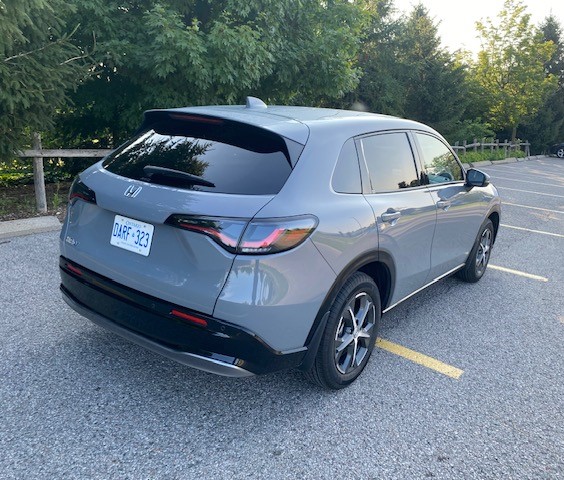
Smooth, ovoid lines hint at Porsche styling.
